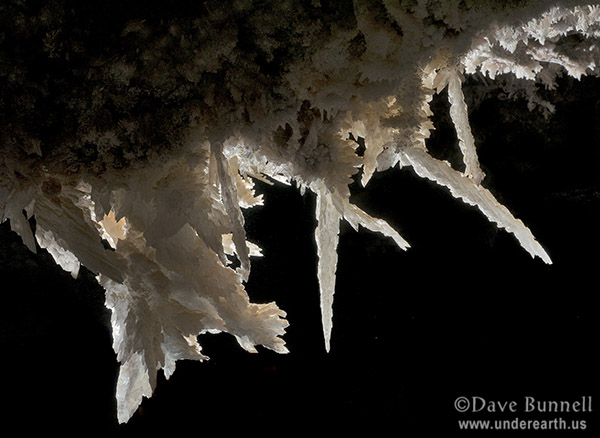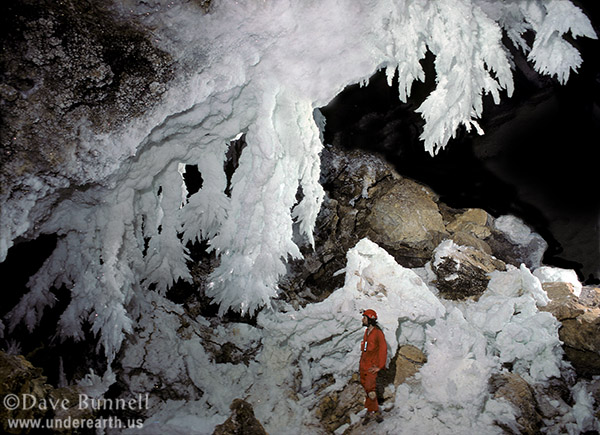
|
Chandeliers are so-named due to the claw-like shapes assumed by stalactites made of gypsum, rather than calcite. Large crystals tend to form on the ends of the stalactite as it grows, making deposition move to the side. Indeed, large crystals are often observed at the end of chandeliers, often in radiating sprays of crystals. Chandeliers are relatively rare, with examples known from many southwestern USA caves, most notably Lechuguilla Cave in New Mexico, which has the largest and most spectacular examples known. These are depicted in the lower two images, shot in the so-called Chandelier Ballroom. Another cave famous for its chandeliers is the Kupp-Coutunn cave in Turkmenistan. |




![]()
| Back to: | |
 |
Created: Nov. 21, 2016 Author: Dave Bunnell |